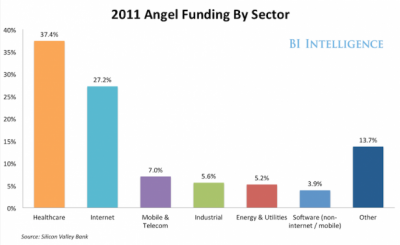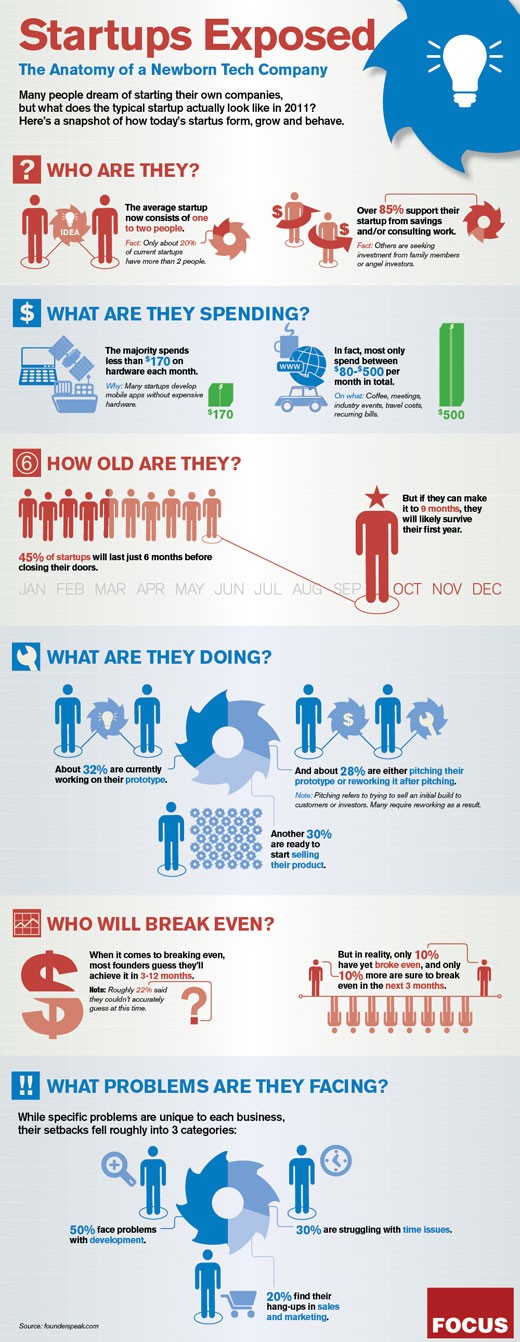The Angel Resource Institute (ARI), Silicon Valley Bank (SVB) and CB Insights today announced findings from the first Halo Report, a collaborative effort to raise awareness of early stage investment activities by angel investment groups. The research series highlights angel investment activity and trends in North America and provides much sought after data that has not been previously available to entrepreneurs or early stage investors.

Halo Report Highlights:
- Angel groups are active throughout the U.S. in 2011
- California leads in deals and dollars among individual states
- 79% of angel group investments were in companies outside of California
- 70% of total funding was invested outside of California
- Median angel group rounds size grew to $700,000, an increase of 40% over 2010
- 58% of angel group investments were in healthcare and internet companies
- 60% of healthcare investments were in medical device and equipment companies
- The most active angel groups were Tech Coast Angels, Band of Angels, Golden Seeds, Central Texas Angel Network and Launchpad Venture Group
Angel investors, those who invest their own funds and expertise directly into startup companies, appear to be taking on an increasingly important role in driving entrepreneurship throughout the United States. Their investments are in startups and young companies, which have been cited by the Kauffman Foundation as the key source of net new jobs in the country. Nationwide, these angel group investments have opened up new opportunities for centers of innovation and entrepreneurship. The Halo Report found that many deals are syndicated among investors. As a result, companies needing larger investments have access to the additional capital they need to grow their businesses.
“The Halo Report is the first of its kind to systematically track investment and company formation at the earliest stage, providing a window into the future of innovation,” according to Allan May, Chairman of ARI. “Startup companies fuel economic growth and job creation and are the drivers of future U.S. competitiveness. This research is an important step in the promotion of startup investing, providing accurate data to help entrepreneurs, policy makers, and the public at large understand who angel investors are, how they operate, what their results are, and how angel investment impacts the economy.”
According to Greg Becker, President and CEO of Silicon Valley Bank, “Entrepreneurs and the investors who take a chance on them are fundamental to the innovation economy. By shedding more light on angel investment activity we’re helping young companies identify sources of capital and mentorship, ultimately leading to the development of innovative products and the next generation of exciting new companies.”
CB Insights CEO and Co-founder, Anand Sanwal, said, “In partnership with ARI and SVB, we are happy to be part of an effort that highlights and brings a data-driven perspective to what is a very important, but historically opaque, part of our innovation economy. We’re looking forward to seeing how investors and corporations use this data to understand emerging early-stage trends and to identify investment and M&A opportunities.” CB Insights specializes in providing data on high growth private companies and their investors and acquirers.
The Halo Report includes aggregate analysis of investment activity by angels and angel groups and highlights trends in round sizes, location and industry preferences. The data is collected via survey and aggregation of public data using CB Insights innovative data analyses. The 2011 Halo Report data is based on 573 deals totaling $873.3 million dollars invested. The transaction details are available in the CB Insights subscription database for users to review and analyze themselves. Academics may also access some of the data through ARI.
Source: https://www.cbinsights.com/blog/angel-investment/angel-investment-data-2011-halo-report




